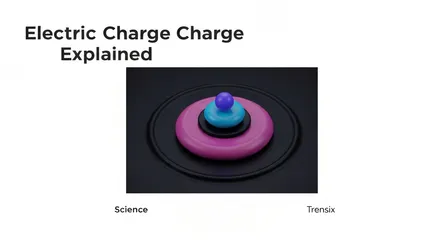Science
Electric Charge Explained

An explanation of electric charge, a fundamental property of matter that governs electricity and magnetism and powers our modern world.
What is it?
Electric charge is a fundamental property of matter that causes it to experience a force when placed in an electromagnetic field. Carried by subatomic particles, it comes in two types: positive, carried by protons, and negative, carried by electrons. A core principle is that like charges repel each other, while opposite charges attract. An object with an equal number of protons and electrons is electrically neutral. Charge is a conserved quantity, meaning the total charge in an isolated system remains constant. It is also quantized, existing in discrete natural units equal to the charge of a single electron or proton.
Why is it trending?
While a timeless concept, understanding electric charge is perpetually relevant as it underpins our technological world. The flow of charged particles, typically electrons, creates electric current, which powers everything from household lights to advanced computers. The interaction between charges is the source of the electromagnetic force, one of the four fundamental forces of nature that governs how atoms and molecules are held together. As technology advances in fields like quantum computing and renewable energy, a deep understanding of this foundational concept remains more critical than ever.
How does it affect people?
Electric charge impacts daily life in countless ways. The familiar zap of static electricity after walking across a carpet is a direct result of charge transfer. On a larger scale, its principles are harnessed in numerous technologies. Laser printers and photocopiers use static electric charges to attract toner to paper, creating printed documents. In industry, electrostatic precipitators use charge to remove pollutant particles from smokestacks, cleaning the air. Even automotive factories use electrostatic painting to apply a smooth, even coat of paint to car bodies, reducing waste.